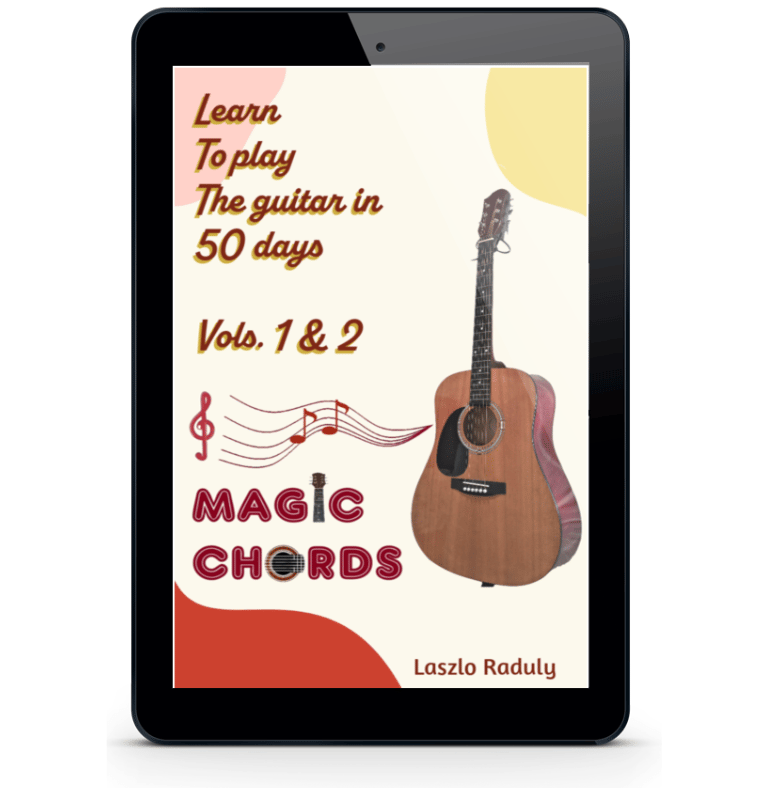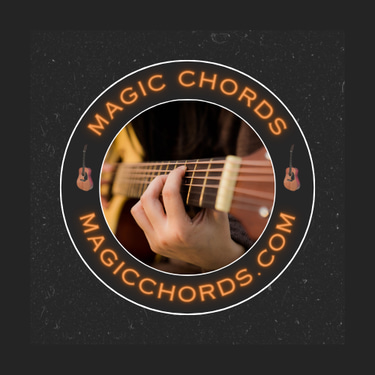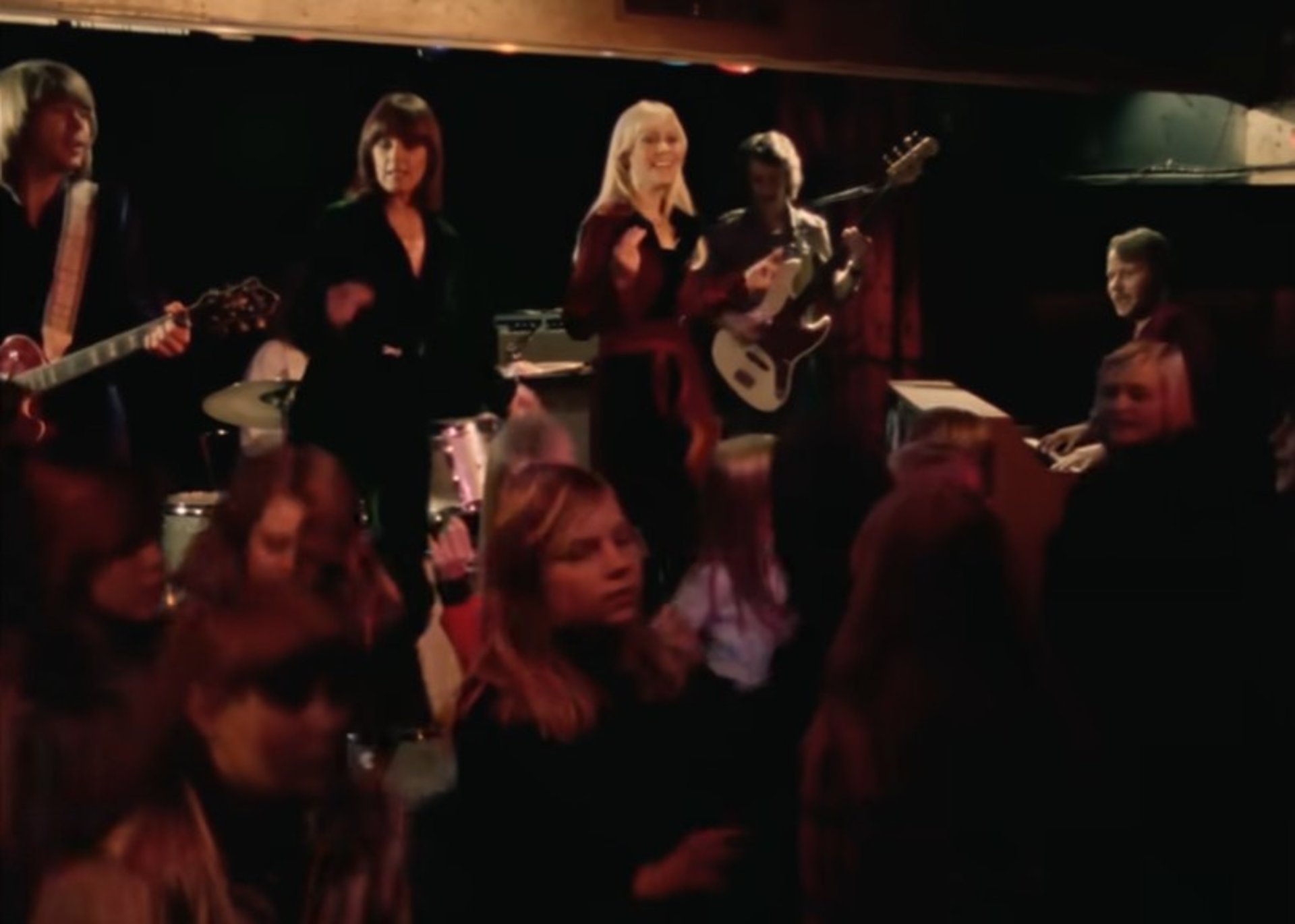
Magical Guitar Songs: Abba - Dancing Queen Chords
Master Abba’s iconic hit with our step-by-step guide to Dancing Queen chords. Learn the chords, strumming, and play this timeless hit on your guitar with ease.
magicchords.com
10/1/2025
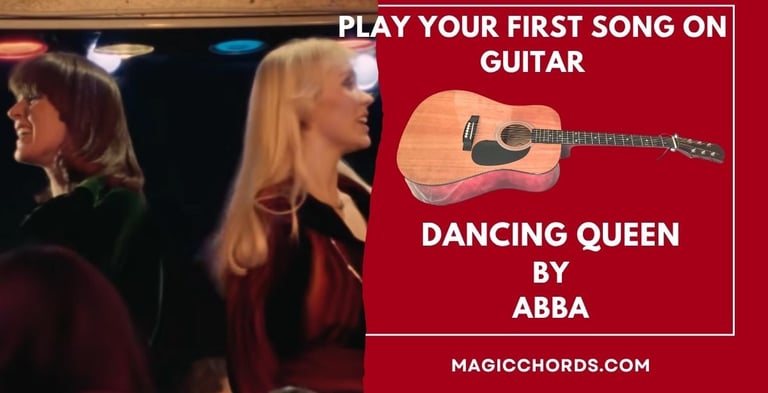

Discover the timeless hit with our guide to Abba’s Dancing Queen chords. Learn the essential chord shapes, strumming tips, and start playing this classic on your guitar today.
Learning to play Abba’s timeless hit can be both fun and rewarding, and mastering the Dancing Queen chords is the first step toward bringing this classic to life on your guitar. Whether you are a beginner or someone looking to expand your repertoire, the Dancing Queen chords offer a wonderful mix of simplicity and elegance. This song is perfect for developing smooth transitions between basic open chords while also practicing rhythm and timing in a lively and joyful way.
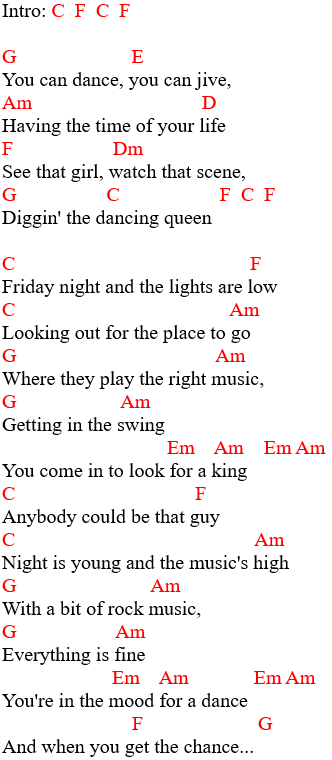

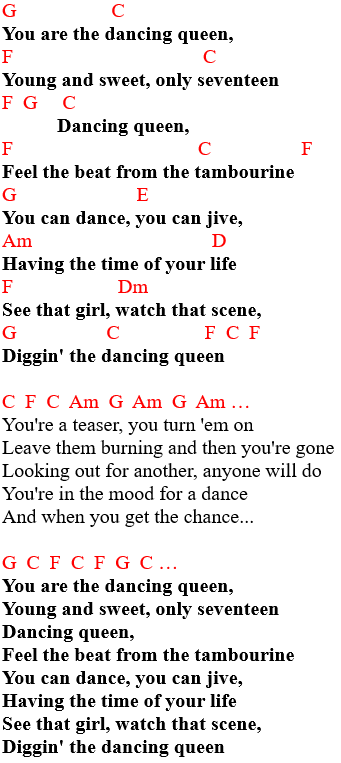

Guitar chords: C, F, G, E, Am, D, Dm and Em
Chords in original key: A, D, E, C#, Fm, B, Bm and C#m
Capo: tune your guitar three steps down!
ABBA - Dancing Queen chords:








The Dancing Queen chords are approachable, making them a great starting point for guitarists who want to play recognizable songs quickly. By focusing on the chord shapes and the strumming patterns, you will not only learn this beloved tune but also build confidence in your playing. Dancing queen chords provide an excellent practice opportunity because they combine both technical skill and musical enjoyment.
When working on dancing queen chords, pay close attention to consistent strumming and clean chord changes. Even if you are just starting out, with regular practice you will notice improvement in your playing and timing. Abba’s hit is more than just a song; it is an experience that connects players and listeners alike. With these chords, you will soon feel like the star of your own performance.
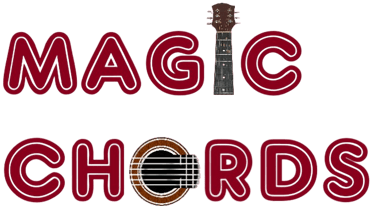

Simple tips for beginner guitarists 1: When learning guitar, many players focus first on the basics, but expanding your skills with slightly more complex shapes can open new musical possibilities. The D7 chord is a wonderful example of this because it introduces a bluesy and soulful sound while remaining approachable for beginners. Practicing this chord helps improve finger coordination and teaches smoother transitions between open chords. With consistent practice, you will notice greater confidence in rhythm playing and more expressive options for creating unique tones on your guitar.
Guitar Songs: Abba – Dancing Queen Chords
Guitar chords in Dancing Queen by Abba
The magic of Abba’s Dancing Queen chords lies in their combination of accessibility and richness. The progression uses familiar chords such as C, F, G, E, A minor, D, D minor, and E minor. These chords are staples in pop and folk music, which means learning them not only allows you to play this song but also prepares you for countless other hits. The Dancing queen chords move smoothly, creating the uplifting sound that makes this track timeless.


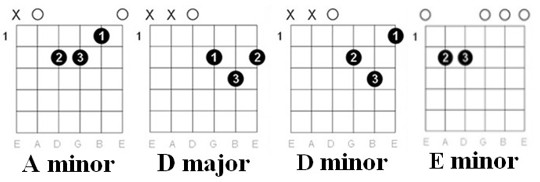

Beginners will be pleased to know that most of these are open chords, which makes them easier to learn and finger correctly. For instance, Am and Em are among the first minor chords new players often master, while C and G are among the most common majors. The presence of F and Dm may pose slight challenges, but practicing their shapes will improve your dexterity and broaden your chord vocabulary. Playing the full sequence helps guitarists get used to switching between major and minor tonalities, which is excellent for ear training.
When learning the dancing queen chords, remember that accuracy matters more than speed at the beginning. Practice each chord transition slowly and clearly until you can switch fluidly without hesitation.
How to play Dancing Queen chords on guitar
To play Abba’s iconic tune, begin by familiarizing yourself with the chord progression. The Dancing Queen chords are arranged in a way that supports the song’s flowing melody. Start by playing through each chord individually, making sure every note rings out cleanly. This will ensure you avoid muted strings or buzzing sounds.
Once you feel comfortable, practice the transitions between chords. One useful tip is to focus on shared finger positions. For example, the Am and C chords share similar finger placements, so moving between them becomes easier with practice. Similarly, shifting from Em to G can be simplified by maintaining finger pressure on the shared strings.


After mastering the chord changes, integrate the rhythm. Dancing queen chords are designed to create a bright, upbeat energy, so the strumming pattern should reflect that. Keep your strumming hand relaxed and maintain a steady tempo to capture the celebratory feel of the song.
It is also helpful to play along with the original track. Doing so improves your timing and lets you feel how the chords blend with the melody. Abba’s music thrives on rhythm and harmony, and syncing your playing with the recording provides invaluable practice.
Dancing Queen Chords – Tips for beginners
If you are new to guitar and working on Dancing queen chords, patience is essential. Start by practicing each chord shape separately. Hold your fingers firmly on the strings, but do not press so hard that it causes tension. Clean sound comes from balanced pressure and proper placement close to the frets. Divide your practice into short, focused sessions. Spend a few minutes each day running through the chord shapes, followed by transitions. Do not rush to play the entire song immediately; build confidence step by step.


Use a metronome to maintain consistent rhythm. Playing in time is just as important as knowing the chords themselves. Begin at a slow tempo, perhaps half the speed of the original track, and gradually increase as you gain comfort. If F major or Dm feel challenging, dedicate extra time to these shapes. Barre chords like F may require strength and patience, but regular practice will make them manageable. Many beginners struggle with this, so persistence is key. Most importantly, enjoy the process. The dancing queen chords are not only a lesson in technique but also a gateway into one of pop music’s most joyful songs.
Dancing Queen Chords and Strumming pattern
The strumming pattern is what brings the Dancing Queen chords to life. A common approach is using a down-down-up-up-down-up rhythm, which matches the uplifting groove of the original track. This pattern creates a flowing feel that complements the bright and energetic chord progression.
Keep your wrist loose when strumming. A stiff hand can make your rhythm sound forced. Let the pick glide across the strings naturally, and focus on maintaining even dynamics. If some strings sound too loud or too quiet, adjust your strumming angle and pressure.
Practice the pattern slowly with a metronome, then gradually increase to match the tempo of the original song. Consistency matters more than speed, so aim for smoothness. Combining this rhythm with the dancing queen chords will give you the authentic feel of Abba’s timeless hit. For beginners, clapping or tapping the rhythm before strumming can help internalize the pattern. Once you feel comfortable, combine both rhythm and chords into a seamless performance.
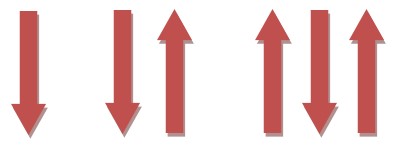

Simple tips for beginner guitarists 2: Many beginner guitarists search for songs that are both easy to learn and instantly recognizable. A perfect example is the The Cranberries - Zombie chords, which rely on a simple progression that still sounds powerful and emotional. By practicing this song, players not only build confidence with chord transitions but also strengthen their strumming consistency, making it an ideal choice for those who want to improve while enjoying a classic tune.
Dancing Queen Chords: Don’t Forget!
Learning the Dancing Queen chords is a rewarding experience for guitarists of all levels. This song combines classic open chords with a memorable strumming pattern, offering both fun and technical growth. Whether you are practicing chord changes, refining your rhythm, or simply enjoying the joy of playing a classic, the dancing queen chords give you the opportunity to connect with music history.
For beginners, this song teaches valuable lessons in timing, accuracy, and chord transitions. For more experienced players, it provides a chance to refine strumming dynamics and perform a crowd-pleaser. By practicing regularly and enjoying the process, you will not only master the Dancing queen chords but also expand your overall guitar skills.
With patience and dedication, you will soon find yourself confidently strumming along to one of Abba’s greatest hits. Dancing Queen is more than just a song—it is a celebration of music, and learning its chords lets you be part of that timeless energy.
